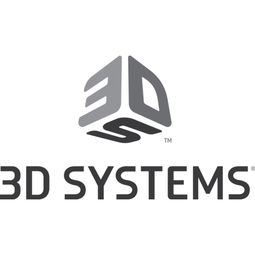
技术
- 分析与建模 - 数字孪生/模拟
- 分析与建模 - 虚拟和增强现实(AR/VR)软件
适用行业
- 教育
- 医疗保健和医院
适用功能
- 采购
用例
- 虚拟现实
- 虚拟培训
服务
- 系统集成
- 培训
客户
Fundacio Puigvert(普格维特基金会)
关于客户
Fundacio Puigvert(Puigvert 基金会)是欧洲领先的提供泌尿科、肾科和男科专业医疗服务的中心之一。其训练有素且享有盛誉的医务人员拥有丰富的经验,在全面的多学科团队中工作。
挑战
由于对患者安全和权利意识的提高、技术的快速发展以及全球医疗保健提供的标准化,外科技术培训的三阶段方法已被广泛建立,包括以下内容:
- 认知、理论阶段。
- 模拟阶段,以熟练掌握目标手术能力和对新技术的信心。
- 手术室根据难度级别执行预定义的模块化手术步骤。
Fundacio Puigvert 在他们的住院医师和研究生培训计划中看到了对虚拟现实模拟的需求。他们决定建立一个虚拟现实模拟实验室,包括泌尿外科、腹腔镜和机器人平台
解决方案
Fundacio Puigvert 购买了3D Systems 的 Simbionix URO Mentor、LAP Mentor和RobotiX Mentor模拟器,用于实践基本技能和高级程序。 Fundació Puigvert 成立了一个由三名顾问组成的团队,以指导学员制定内窥镜、腹腔镜和机器人手术方面的既定课程,以促进手术室的任何活动。
RobotiX Mentor 成为他们本科和住院医师计划中不可或缺的一部分,以掌握机器人手术技术。
运营影响

Case Study missing?
Start adding your own!
Register with your work email and create a new case study profile for your business.
相关案例.

Case Study
Hospital Inventory Management
The hospital supply chain team is responsible for ensuring that the right medical supplies are readily available to clinicians when and where needed, and to do so in the most efficient manner possible. However, many of the systems and processes in use at the cancer center for supply chain management were not best suited to support these goals. Barcoding technology, a commonly used method for inventory management of medical supplies, is labor intensive, time consuming, does not provide real-time visibility into inventory levels and can be prone to error. Consequently, the lack of accurate and real-time visibility into inventory levels across multiple supply rooms in multiple hospital facilities creates additional inefficiency in the system causing over-ordering, hoarding, and wasted supplies. Other sources of waste and cost were also identified as candidates for improvement. Existing systems and processes did not provide adequate security for high-cost inventory within the hospital, which was another driver of cost. A lack of visibility into expiration dates for supplies resulted in supplies being wasted due to past expiry dates. Storage of supplies was also a key consideration given the location of the cancer center’s facilities in a dense urban setting, where space is always at a premium. In order to address the challenges outlined above, the hospital sought a solution that would provide real-time inventory information with high levels of accuracy, reduce the level of manual effort required and enable data driven decision making to ensure that the right supplies were readily available to clinicians in the right location at the right time.

Case Study
Gas Pipeline Monitoring System for Hospitals
This system integrator focuses on providing centralized gas pipeline monitoring systems for hospitals. The service they provide makes it possible for hospitals to reduce both maintenance and labor costs. Since hospitals may not have an existing network suitable for this type of system, GPRS communication provides an easy and ready-to-use solution for remote, distributed monitoring systems System Requirements - GPRS communication - Seamless connection with SCADA software - Simple, front-end control capability - Expandable I/O channels - Combine AI, DI, and DO channels

Case Study
Driving Digital Transformations for Vitro Diagnostic Medical Devices
Diagnostic devices play a vital role in helping to improve healthcare delivery. In fact, an estimated 60 percent of the world’s medical decisions are made with support from in vitrodiagnostics (IVD) solutions, such as those provided by Roche Diagnostics, an industry leader. As the demand for medical diagnostic services grows rapidly in hospitals and clinics across China, so does the market for IVD solutions. In addition, the typically high cost of these diagnostic devices means that comprehensive post-sales services are needed. Wanteed to improve three portions of thr IVD:1. Remotely monitor and manage IVD devices as fixed assets.2. Optimizing device availability with predictive maintenance.3. Recommending the best IVD solution for a customer’s needs.

Case Study
HaemoCloud Global Blood Management System
1) Deliver a connected digital product system to protect and increase the differentiated value of Haemonetics blood and plasma solutions. 2) Improve patient outcomes by increasing the efficiency of blood supply flows. 3) Navigate and satisfy a complex web of global regulatory compliance requirements. 4) Reduce costly and labor-intensive maintenance procedures.

Case Study
Harnessing real-time data to give a holistic picture of patient health
Every day, vast quantities of data are collected about patients as they pass through health service organizations—from operational data such as treatment history and medications to physiological data captured by medical devices. The insights hidden within this treasure trove of data can be used to support more personalized treatments, more accurate diagnosis and more advanced preparative care. But since the information is generated faster than most organizations can consume it, unlocking the power of this big data can be a struggle. This type of predictive approach not only improves patient care—it also helps to reduce costs, because in the healthcare industry, prevention is almost always more cost-effective than treatment. However, collecting, analyzing and presenting these data-streams in a way that clinicians can easily understand can pose a significant technical challenge.




